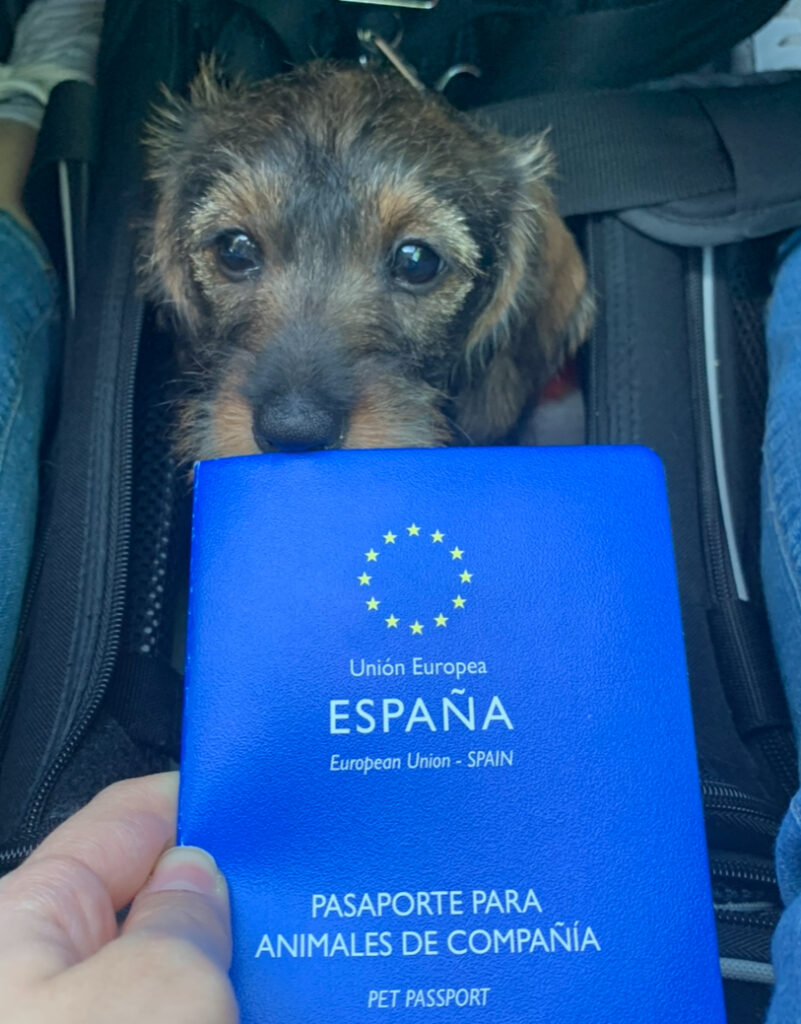Affiliate Disclosure: This post contains affiliate links, which means I may receive a small commission if you make a purchase through a link at no additional cost to you.
As a pet travel advisor, I help pet parents like you navigate all aspects of traveling with their pets, whether it’s for a short vacation or a major international move. When planning a permanent or long-term move, bringing your pet is essential. However, for short-term leisure trips, traveling with a pet isn’t always in their best interest. There are times when leaving them in a safe and comfortable environment with a trusted pet care provider, family member, or friend is the better choice. Here are some key scenarios when it’s best not to travel with your pet and allow them to have a staycation instead.
The Climate Is Not Suitable

Not all pets thrive in every environment, and extreme weather can pose serious risks. Small short-haired dogs may struggle in freezing temperatures, while others may feel uncomfortable in hot climates. Before bringing your pet, consider whether they will truly be comfortable and able to enjoy where you’re going.
For example, traveling to Phoenix in the summer with a Husky can be extremely dangerous and uncomfortable for them due to the heat. On the flip side, bringing a small, senior Yorkshire Terrier to a snowy destination like Norway in the winter time may cause them discomfort in freezing temperatures.
It’s also important to think beyond the weather. The type of environment matters—some dogs do well in cities, while others are easily overwhelmed by noise, crowds, and traffic. If your pet is used to a quiet routine, they may be much happier exploring trails, nature, or staying home where they feel secure.
Related: Cold Weather Safety for Pets – AVMA
Related: Hot Weather Safety for Pets – Red Cross
It’s Out of Your Budget
Pet-friendly travel comes with real costs, from airline fees and vet appointments to paperwork and accommodations. In 2023 I conducted joint research with Lauren Brown, CEO of PadsPass, and we found that most pet parents spend at least $500 per trip on pet-related travel expenses alone—and that doesn’t include your own costs.
When you do decide to travel, be financially prepared. I recommend that every pet parent keep at least $1,000 set aside in an emergency veterinary expenses fund just in case something unexpected comes up while you’re away.
If a big pet-friendly trip isn’t in your budget yet, it’s completely okay to wait to travel with your pet! I never encourage pet parents to go into debt for leisure travel. An alternative to big trips is to keep your adventures local while you save up for the big ones. To help you get started with budgeting for the big trips, consider opening an eligible Ally high yield savings account – it’s what I personally use to budget and save for trips with Leia. Plus, you can get a $100 bonus when you open an eligible account by clicking the button below!
Family Emergency Requires Immediate Travel
Emergencies can happen at any time, and sometimes you need to travel on short notice. Unfortunately, many destinations with strict pet import requirements—like the UK, Bermuda, or Hawaii—don’t allow last-minute entry of pets into their jurisdictions. Health certificates, required testing, parasite treatments and inspections often require weeks or even months of preparation.
If your pet cannot meet the necessary export or import requirements, it’s never worth the risk of attempting to bring them. Consequences can include your pet being sent back, entered into quarantine, or euthanasia at your expense.
The safest and most practical option is to leave them during an emergency trip in the care of a trusted friend, family member, or pet care provider. Planning ahead for emergency care, even if it’s just identifying a few people who could help out, is one of the best ways to keep your pet safe when life takes an unexpected turn.
Your Pet’s Veterinarian Recommends Against Travel
Not every pet is fit for travel, and your veterinarian’s advice should always be taken seriously. If your pet has certain physical or medical challenges, it may be more stressful than enjoyable for them to come along.
Travel may not be advisable if your pet:
- Suffers from severe anxiety when in public settings
- Has a medical condition that could be worsened by stress, heat, or altitude changes.
- Is a senior animal with mobility issues, poor stamina, or sensitivity to change.
- Your pet is not up to date on required vaccinations
If you’re planning a short leisure trip and your pet would need to fly in cargo, I generally recommend leaving them at home. The stress and logistics aren’t worth it for just a few days. For permanent or long-term moves, that’s a different story—and one that deserves strategic planning.
Your Pet is Too Young or Not Fully Vaccinated

Traveling with a puppy or kitten who isn’t fully vaccinated can put them at serious risk—and in many cases, it’s simply not allowed. Most jurisdictions require pets to be fully vaccinated against rabies and other core vaccinations before entry. If your pet is under 12 weeks old, they likely aren’t eligible for a rabies vaccine yet, which makes international travel for the purposes of vacation logistically impossible.
Even for domestic US and Canada trips, it’s best to wait until your puppy or kitten has received their core vaccinations, along with anything else your veterinarian recommends based on your location and lifestyle. Until they’ve completed their vaccination series, their immune systems are still developing, and they’re more vulnerable to viruses and diseases—especially in airports, hotels, or unfamiliar places with other animals.
When in doubt, it’s always safer to wait to travel with your pet. Prioritizing their long-term health now helps make future travel less stressful for both of you.
Alternatives to Traveling with Your Pet
If you’ve decided that leaving your pet behind is the best option, there are still excellent ways to ensure they’re well cared for and comfortable.
- Family or Friends: A trusted loved one can keep your pet in a familiar setting or in their own home.
- House Sitters: Platforms like TrustedHousesitters connect you with experienced travelers who stay in your home and care for your pets. [Click here to save 25% on your membership]
- Pet Sitting Apps: Rover and Wag offer access to local sitters who can provide drop-in visits, walks, or overnight care.
- Save $20 off your first booking here or apply promo code ‘ALIZAB48230’ at checkout
- Get $10 off your first Wag! service here
Boarding Facilities and Daycare: In some cases, a local pet hotel or daycare may be the most reliable and structured option. If you’re in the Lehigh Valley area, I recommend K9 Resorts in Bethlehem.
Conclusion: Prioritize Your Pet’s Well-Being
Leisure travel and relocation are not the same and I believe that not every trip needs to include your pet. If your destination, budget, or circumstances aren’t ideal or your pet won’t have a fun time, giving your pet a relaxing staycation will be in the best interest of your pet.
Need help deciding what’s best for your pet’s travel plans? Schedule a consultation call with me. I’ll walk you through logistics, costs, how to find the best pet care provider, and ethical considerations—so you can make the best choice for your pet’s unique situation.